Enhance your health with free online physiotherapy exercise lessons and videos about various disease and health condition
Upper Abs Workout
Upper abs workout are stomach weight loss exercises that tones up upper abdominal muscles. Upper abdomen exercises are key to build the base of your six pack.
When training the abdominals you should pay attention to the three primary areas of your midsection - the rectus abdominis (frontal abdominal wall), obliques (muscles at the sides of your waist), and intercostals (bands of muscle that run diagonally across the sides of your upper abdomen).
Beginner level Upper abs workout
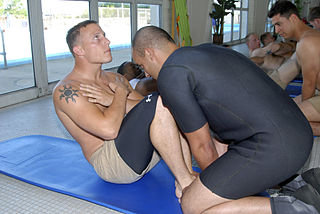
1) Sit up - Upper abs workout
The sit up is a strength training exercise commonly performed with the aim of strengthening the hip flexors and abdominal muscles. It begins with lying with the back on the floor, typically with the arms across the chest or hands behind the head and the knees bent in an attempt to reduce stress on the back muscles and spine, and then elevating both the upper and lower vertebrae from the floor until everything superior to the buttocks is not touching the ground. Some argue that sit ups can be dangerous due to high compressive lumbar load and may be replaced with the crunch in exercise programs.
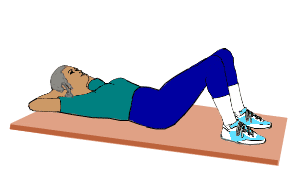
2) Crunch - Upper abs workout
The crunch is one of the most common abdominal exercises. It primarily works the rectus abdominis muscle. A crunch begins with lying face up on the floor with knees bent. The movement begins by curling the shoulders towards the pelvis. The hands can be behind or beside the neck or crossed over the chest. Injury can be caused by pushing against the head or neck with the hands.
Note- Unlike the sit-up, in a proper crunch, the lower back stays on the floor. This is said to eliminate any involvement by the hip flexors, and make the crunch an effective isolation exercise for the abdominals. This is not true, because the psoas muscles are both hip flexors and trunk flexors, and works as a synergist to aid the rectus abdominis in the crunch.
3) Swiss Ball Crunches -
Begin by sitting on the medicine ball with the legs about shoulder width apart while holding a 5-10 pound weights in your hands. Then roll back until the medicine ball is against your back and your torso is parallel with the floor. While holding onto the weight with both hands, place the weight on your chest or behind your head. Then firmly squeeze your abs and crunch up as much as possible. Slowly go back down to starting position while keeping total control. Repeat the process as needed.
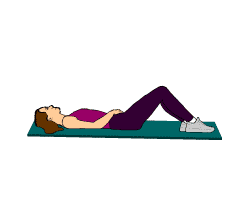
4) Pelvic tilt -
Do the pelvic tilt to strengthen your abdominal muscles. Lie on your back on the floor with your knees bent. Flatten your back against the floor by tightening your abdominal muscles and bending your pelvis up slightly. Hold for up to 10 seconds. Repeat.
Intermediate level Upper abs workout
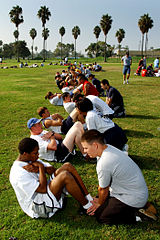
5) Curl ups- Upper abs workout
Lie on your back with your arms crossed over your chest, keeping your knees slightly bent. Raise your upper body off the floor by flexing your abdominal muscles. Touch your elbows to your thighs and repeat. During this, someone will be counting and holding your feet for you.
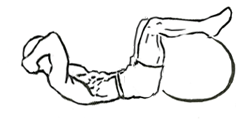
6) Supported Crunches -
Your knees should be bent at approximately 90 degrees. With hands on your head, concentrate fully on your upper abdominals as you push your lower back into the floor, slowly curling your shoulders towards your knees, Your elbows should move inwards as you move upwards. Your elbows should reach approx 6-8 inches from your knees. Hold the position for two seconds and slowly lower back to the starting position.
7) Butterfly crunches -
The abdominal butterfly crunch is an exercise that targets the upper abdominal muscles. It offers a twist on the common abdominal crunch exercise. Since your knees drop out to the side it makes it more difficult to maintain a flat spine which in turn works your abdominal muscles even more. Try this variation to help work your abs even harder and add variety to your routine.
Lie on the floor on your back. The knees are bent and the feet are flat on the floor. Keeping the soles of your feet touching, drop the knees out to the side and away from one another. Keep your low back in contact with the floor. The closer your heels are to your body, the harder it is to maintain a flat spine so slide the heels further away if needed. The closer your knees are to the floor the more tendency there is for the low back to arch. So only lower the knees as far as you can allowing the low back to stay in contact with the floor. You may not be able to open the knees very far if your inner muscles are tight. However with constant stretching this will improve. Place the fingertips lightly behind the head. Avoid clasping the hands as this may cause you to pull on the neck. Press your low back into the floor, tighten your abdominal muscles and on the exhale lift the head and shoulder blades straight up off the floor. Do not round forward, instead lift straight up to the ceiling. On the inhale lower slowly down with control. Repeat for three sets of eight to 12 repetitions.
8) Long Arm Crunch - Upper abs workout
Lie on your back on a mat or padded surface. Bend your knees enough to keep your feet flat on the floor. Extend arms above your head, and bring hands together, holding your arms tight to your ears. Keep your head and neck in line with the rest of your back, and curl up, so your upper body comes off the mat at about a 20 degree angle. As you lift, be careful to keep your lower back glued to the mat, and your repetitions slow for the most effectiveness. Exhale as you rise up, and drive your back into the floor. Focus on feeling the crunch in your abdominal muscles as you lift. Be sure to keep your shoulders pressed down, not hunched up to your ears as you lift. Complete 15-20 repetitions.
Advanced level Upper abs workout
9) Tuck Crunch - Upper abs workout
To begin, lie down on the floor or an exercise mat with your back pressed against the floor. Your arms should be lying across your sides with the palms facing down. Your legs should be crossed by wrapping one ankle around the other. Slowly elevate your legs up in the air until your thighs are perpendicular to the floor with a slight bend at the knees. Note: Your knees and toes should be parallel to the floor as opposed to the thighs. Move your arms from the floor and cross them so they are resting on your chest. This is the starting position. While keeping your lower back pressed against the floor, slowly lift your torso. Remember to exhale while perform this part of the exercise. Slowly begin to lower your torso back down to the starting position while inhaling. Repeat for the recommended amount of repetitions.
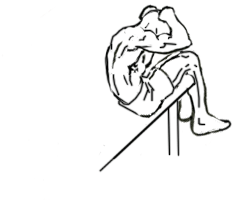
10) Decline crunches - Upper abs workout
Secure your legs at the end of the decline bench and lie down. Now place your hands lightly on either side of your head keeping your elbows in. Tip: Don't lock your fingers behind your head. While pushing the small of your back down in the bench to better isolate your abdominal muscles, begin to roll your shoulders off it. Continue to push down as hard as you can with your lower back as you contract your abdominals and exhale. Your shoulders should come up off the bench only about four inches, and your lower back should remain on the bench. At the top of the movement, contract your abdominals hard and keep the contraction for a second. After the one second contraction, begin to come down slowly again to the starting position as you inhale. Repeat for the recommended amount of repetitions.
11) Double crunches - Upper abs workout
The double crunch works your upper and lower abdomen muscles because you are lifting both the upper and lower portion of your body. To "surprise" your muscles into working harder, try this twist on the classic crunch.
Read more about Upper Abs Exercises and weight loss on www.hopkinsmedicine.org
Lay on your back with your knees bent as if doing the classic crunch. Cross your feet at the ankles or keep them shoulder width apart, whichever way is more comfortable for you. To support your neck, place your fingers behind your head with your elbows open to the sides. Take a deep breath. Exhale as you simultaneously curl your legs toward your chest and lift your shoulders slightly off the floor. You should always exhale during an exercise when your muscles are working their hardest. Really concentrate on your ab muscles as you contract. Keep your movements slow and controlled. Bring your legs and shoulders back down. Do at least 3 sets of 10 to 12 reps. If you're really dedicated to getting 6-pack abs, do each set to failure (until you literally can't crunch anymore).
Return from Upper abs workout to Home Page
Return from Upper abs workout to Sports Physical Therapy
Recent Articles
|
Author's Pick
Rating: 4.4 Votes: 252 |

